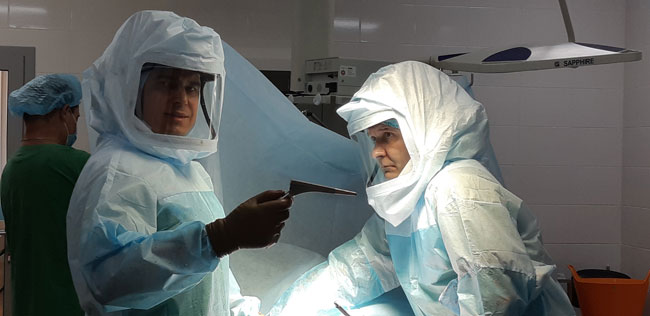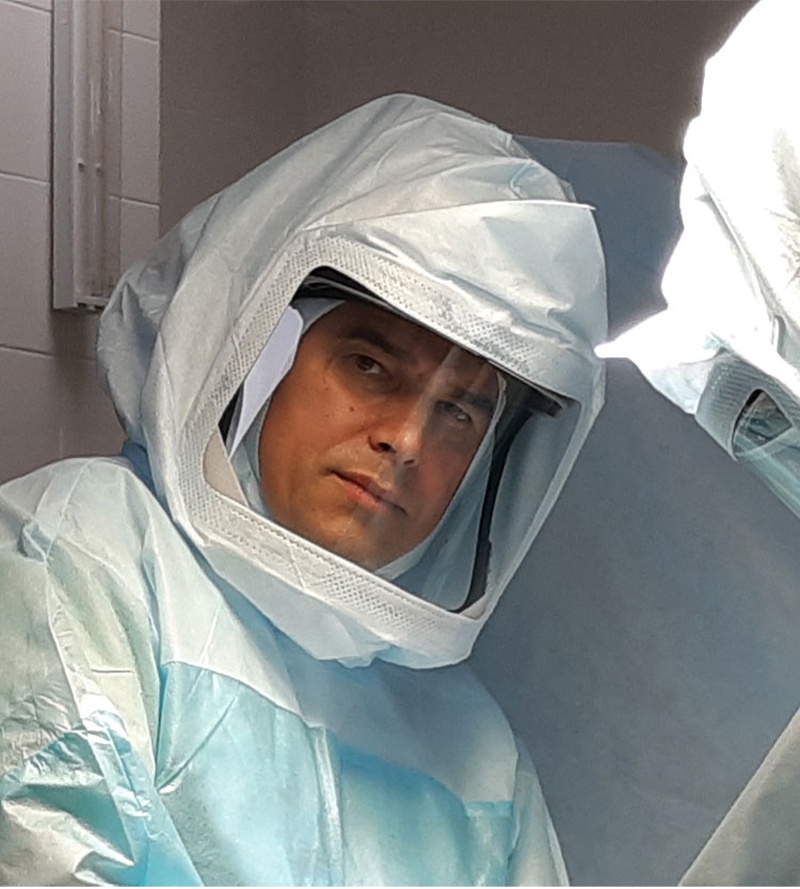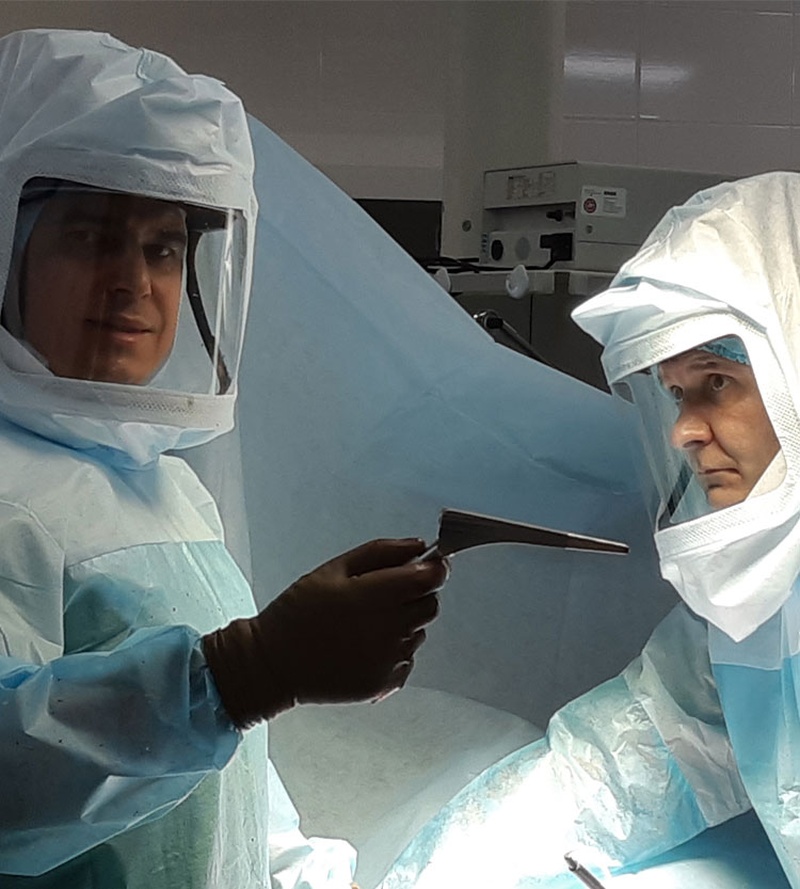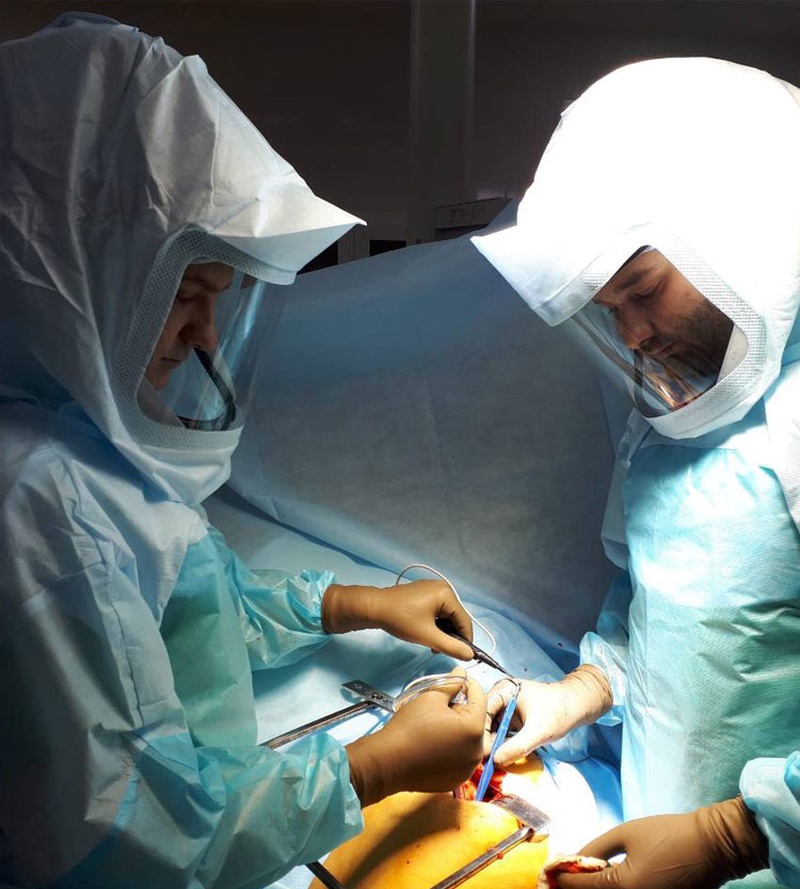- Revision endoprosthesis of hip and knee joints
Revision replacement of hip and knee joints
Joint replacement is a surgical procedure that involves the replacement of a damaged joint by an artificial one that fully replicates the shape and function of a biological human joint. The implantation of the artificial joint allows the patient to live a more active lifestyle than before without any feelings of pain and discomfort. Joint replacement is one of the most successful procedures in treating various different health conditions, with the artificial implant being able to last for around 20-25 years. Unfortunately, the rapid increase in the number of primary hip and knee joint surgeries worldwide has led to an increase in various complications. These complications require a revision replacement, which is essentially a second surgical procedure that involves the removal of the original implant and a replacement of a new one. Such complications are relatively rare.
The most common causes of revision arthroplasty are:
1) Repeated (recurrent) dislocation of the implant;
2) Implant wears off or loosens;
3) Periprosthetic infection.
1) Implant wearing off or loosening
The modern implant is made out of high strength, bionert metal with polymer parts and sometimes ceramics. Micro particles of plastic or metal of the hip or knee implant tend to wear off with active use. Younger, more physically active patients tend to have a higher risk of their implants to loosen up and wear off. Older patients therefore do not require repeated revision surgery. Middle-aged and young patients will almost inevitably require revision joint replacement, as the constant repetitive motion of the mechanical structures will result in the small parts of the implant to wear out. The likelihood of this happeneing depends on the lifestyle and type of implant that was used in the initial joint replacement surgery. Some micro particles can be made of polyethylene, some might contain cement, ceramics or metal. When these particles are released from the implant, the patient’s immune system recognizes them as foreign matter (not natural to the body). As a result, the body will generate an immune response, leading to the destruction of the bones around the implant (a condition called osteolysis). If the bone fracture is severe enough, the components of the hip or knee joint may become loose, resulting in bone fracture. Mechanical wear that causes the implant to wear out is one of the most common forms of mechanical failure. However, other forms of mechanical failure, such as prosthetic failure, may occur during an injury.

2) Periprosthetic infection
Periprosthetic infection can occur at any time after surgery. The risk is at its highest during the first six weeks. The risk of "late" infections after this period is lower. Occasionally, a non-related infection can occur in the mouth, gums or teeth. Other infections may occur in lungs, urine and skin, resulting in the bacteria to enter the bloodstream. The bacteria can infect the implant, causing joint pain and fever.
The treatment of periprosthetic infection is complex, expensive, and requires more time in the operating room compared to a classic revision surgery in the absence of infection, consequently putting it a higher failure risk. To avoid any infections, it is very important for the patient to closely follow all the recommendations of the doctor after the surgery.
In case the infection occurs, the surgeon will attempt to identify the type of bacteria responsible for the infection. This is conducted by taking a fluid puncture from the hip or knee implant and sending it to the laboratory for it to get tested. Once the type of bacteria is identified, the appropriate antibiotics are administrated to the patient to fight against the infection. The treatment depends on the type of bacteria and its sensitivity to antibiotics, as well as the severity and duration of the infection. It mainly involves a combination of surgery and a course of antibiotics, but the surgeon will make sure to discuss all possible harms and benefits of each treatment option.
The most common treatment options are:
A) Thorough a secondary surgical cleaning of the joint implant. This is usually done at the early stages of infection (within a few days or weeks). This is usually recommended when the infection is detected very early (within a few days or weeks). Patients need six weeks of intravenous antibiotics and often a low dose of oral antibiotics over a long period of time.
B) Two-stage revision arthroplasty: in the first stage, removal of all components of the implant and cement takes place. This is surgically performed, with the opening and flushing of all cavities as well as the installment of a temporary cement spacer with antibiotics. In addition, systemic antibiotic therapy is carried out within 6-8 weeks of the first stages of surgical treatment. The second stage consists of the removal of the spacer and re-implantation of the final revision endoprosthesis (usually 1.5 to 3 months after initial surgery in the absence of clinical infection).

3) Repeated (recurrent) dislocation of the implant
Dislocation of the implant is also considered to be one of the complications that need to be taken into account, as it leads to repeated, often difficult, surgical interventions. Dislocation of the implant is a problem for both, the patient and the surgeon, as it is associated with intense pain and significant impairment of function. The dislocation mainly occurs due to the misalignment of the pelvic and femoral components of the implant.
| Doctor | Name | Speciality | Work time (Monday) |
|---|---|---|---|
 | Процюк Віктор Васильович | Травматологія та ортопедія | - |
 | Васильчишин Ярослав Миколайович | Отропед-травматолог | - |




Comments